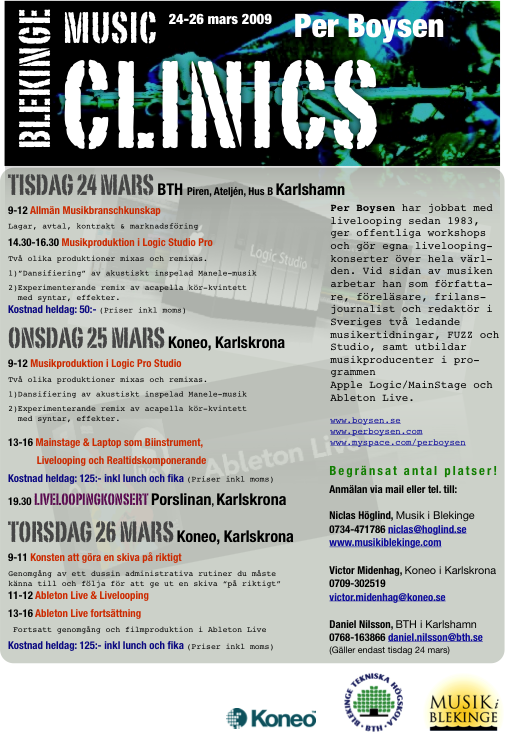Pose in Ivana – Reinvention of pose from Heidi on Vimeo.
Here’s a nice film that uses music I created by playing my Tenor Sax and Mobius looper; i.e[……]
Solo Concerts | Film/media Music
Pose in Ivana – Reinvention of pose from Heidi on Vimeo.
Here’s a nice film that uses music I created by playing my Tenor Sax and Mobius looper; i.e[……]
Just a quick video upload testing out my new Tim Donahue signature Electric Fretless Harp Guitar. I think it plays like a dream… in fact I have been dreaming for decades about certain aspects of what this instrument has to offer. Tim designed it and has been playing this and the fretted version since the eighties and just recently initiating manufacturing of his harp guitars. You’ll find more on that at http://www.timdonahue.com/
[……]
Bidule is one of the most configurable plug-in hosts for setting up your own custom effect and live looping laptop rig. In this example we’re using th[……]
Clinics hold in Swedish – concerts in Bb. Pre booking, please see poster below:
 [……]
[……]
When you loop live it can be quite a challenge to make use of such a basic musical component as a simple chord progression. This may have to do with t[……]